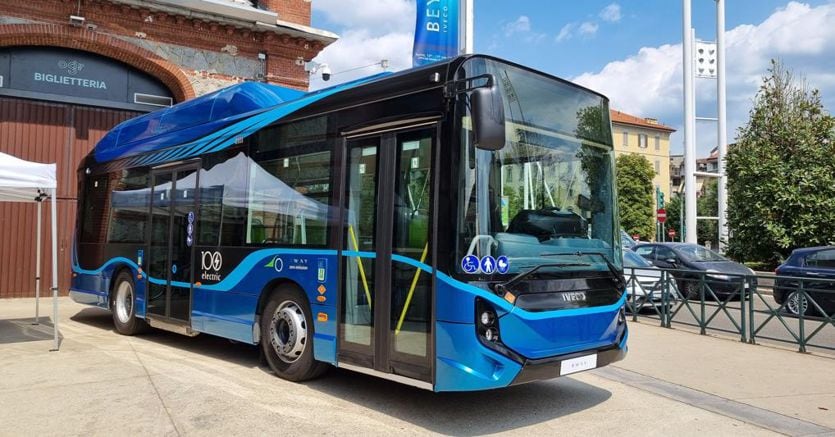Iveco accelerates the production of electric-powered buses in Italy and puts 450 million on the plate in research and development for technologies for electric and hydrogen powertrain systems. The decision to return to producing electric buses in Italy and the partnership with Htwo – the commercial brand of Hyundai Motor Group for hydrogen – to equip future buses produced in Italy with fuel cell systems fall within this strategy of the Group led by Gerrit Marx Europe, powered by hydrogen, under the Iveco brand.
The transport revolution
“We are witnessing the greatest transition ever seen in the commercial vehicle sector – explains CEO Marx – we have made many steps forward in the last two years and now we want to accelerate”. The new Daily full electric will be on the market in autumn while the European model of the Nikola Tre, the battery-powered truck, will be presented in Hanover. The CEO’s forecast is to reach 2025 with a share of electric-powered trucks between 7 and 8 percent. “These are vehicles that now cost at least four times a diesel-powered truck, and new sales models will be needed, such as pay per use”. The Group’s strategy – based on the development of electric traction systems, alongside the potential of hydrogen, without forgetting biofuels such as biomethane – was at the center of «Beyond», an international event organized at the Turin Ogrs on transport issues. , mobility and innovation, with partners, customers, institutions, authorities, suppliers and dealers, until 17 July.
Plan for the buses
The Group’s goal is to produce 3,000 electric buses until 2027 and then, when fully operational, stabilize at one thousand units per year. The Italian plants will contribute to this industrial objective, in particular the two Fpt engine factories in Foggia – where the buses will be assembled – and in Turin, focused on the production and development of electric and hydrogen systems and where axles for the Nikola are already being produced. Three. The effort, therefore, is to restore a supply chain in Italy connected to the production of zero-emission vehicles for mass transport, capable of accelerating the green transition desired by the EU and supported by the Italian government, as the Minister for Development reminds us. economic Giancarlo Giorgetti: «We have reserved unprecedented resources for the entire mobility system, namely 16 billion considering the Automotive Fund and the Resilience Plan».
On the plate, in particular, there are the 300 million that the PNRR reserves for the development of electric and hydrogen buses, resources that will be made available to producers in the form of development contracts. Among the projects in progress there is the one presented by Iveco to support the production of zero-impact vehicles in Italy and which, according to the Sole 24 Ore, could obtain up to 80 million of public resources. “There will be a conversion of the Italian fleet and Iveco wants to aim to conquer an important slice of the market” explains Domenico Nucera, head of the Bus Business Unit of the Iveco Group. The push for the transition comes from the incentives in the field, but also from a change of business model based on Total Cost of Ownership which has already achieved parity between diesel-fueled buses and electric traction vehicles. “We expect – adds Nucera – that by 2030 battery-powered vehicles will cut costs between 25 and 30% compared to diesel engines”. The development of hydrogen traction technologies is more complex, strongly conditioned by the cost of the raw material which is still too high and still destined for small but still growing market segments.
In Foggia, the bodies of the buses arriving from the European sites of the Iveco Group will be assembled with battery systems, produced in Turin, with fuel cells and engines in general and with all components on board, from Infotainment to seats. In perspective, therefore, the goal is to strengthen the Italian supply chain linked to green motorization for mass transport by aiming for a 30% increase in the contribution of the Made in Italy supply chain to the total volume of activity.
